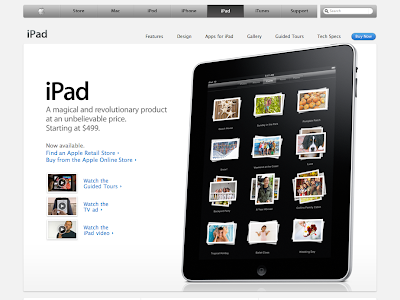Let's play a game. Give yourself 7 seconds to study the landing page below. In 7 seconds, you should be able to answer:
1. Who is the company?
2. What are they selling?
3. What is the offer?
4. What is the call to action (what do they want you to do)?

If you weren't able to answer all the questions in 7 seconds, that's OK because this is an example of a bad landing page! Why is it bad? Well, is the company Google or Verizon or Motorola? What is the call to action? Do they want me to share apps or buy a Droid? If you look at the site for longer than 7 seconds, then of course you'll be able to answer these questions. Unfortunately, users do not give a new site longer than 7 seconds.
Now, give yourself 7 seconds again for the page below.

You should be able to answer all four questions for this page, because this is an example of a good landing page! The company is Apple. They're selling an iPad starting at $499. They want you to buy an iPad.
Now that we have seen bad vs. good landing pages, let's take a look at how we can test and measure that our landing page is doing its job. Landing page optimization (also known as conversion rate optimization) measures the effectiveness of a landing page by observing how often people visit the page and do whatever you want them to do. There are a few things that you can do to test and measure the effectiveness of your landing page:
1. Install a website optimizer to collect data. Google's website optimizer is very easy to use. All you have to do is take the Javascript tags that they give you and insert that into the pages you want to track.
2. Validate your decisions with A/B testing. In A/B testing, you would write two versions of your landing page. If there are 1000 visitors, you would send 500 to site A, and 500 to site B. Based on which site produces the highest conversion rate, you would publish that site.
3. Test primary images, call to action, headlines, buttons.
.